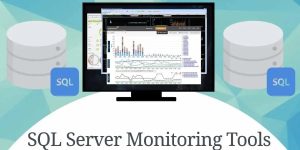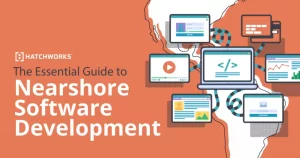What is ERP?

Enterprise resource planning (ERP) is a type of software system that helps organizations automate and manage core business processes for optimal performance. ERP software streamlines the flow of data between a company’s business processes by providing a single source and streamlining operations across the organization. It has the ability to bring together the company’s finance, supply chain, operations, trade, reporting, production and human resources activities on a single platform.
Most companies have a financial and operations system, but siled systems fail to extend beyond day-to-day business processes or contribute to business growth. As companies grow and their needs change, their systems must grow as well. In this article, you’ll learn what ERP is and how having software that adapts to your needs can help you run your business more agilely and efficiently.
Modern ERP software systems
In the past, ERP systems were packages that operated separately and did not communicate with other systems. Each system required expensive, complex, and specialized code to meet individual business requirements, slowing or even preventing the adoption of new technologies or process improvements.
What makes today’s ERP software different is that it brings all these processes together and combines them into one fluid system. Additionally, data connections are not just limited to your ERP system, but are also available in your productivity tools, e-commerce, and even customer engagement solutions. It allows you to connect all your data to get better insights to help you optimize your processes across your organization.
Additionally, a modern ERP solution; It offers flexible deployment options, enhanced security and privacy, maintainability, and low-code customization. Most importantly, it provides continuity and resilience for your organization and processes with insights that help you quickly innovate today and prepare your organization for future changes.
Why is ERP important for your organization?
While there is no one-size-fits-all solution for every business process, ERP technology is getting better at bringing all business processes together. Once your processes, systems, and data are connected, you get the business intelligence, acceleration, and adaptability you need to start improving your operations.
Below you can see three advantages that an ERP system can offer to improve your organization:
- Get the best performance. Thanks to solutions that use artificial intelligence, you can access insights that improve your decision-making process and discover methods that will improve your operational performance in the future.
- Accelerate operational impact. By connecting processes and data, you can offer employees greater visibility and flexibility. This way, you can help employees take action quickly and deliver more value across the organization.
- Ensure enterprise agility. Many ERP solutions are developed to adapt to your needs and grow with you. This way, you can proactively prepare and respond quickly to any operational disruptions or market changes.
Which units of the organization can be optimized with ERP?
An ERP system can benefit many key units in your organization. It can help break down barriers between the front office and back office and gives you the ability to tailor your solution to your new business priorities. Some of the key organizational units where ERP can be useful include:
Trade
Retailers today are struggling with many challenges. An ERP system can deliver a complete omnichannel commerce solution that combines back office, store and digital experiences . Customers get a more personalized and seamless shopping experience with AI recommendations, while retailers can increase employee productivity, help reduce fraud, and grow their business.
finance
Modern ERP increases profitability and helps ensure compliance. It offers dashboards where you can see an overview of your financial situation and artificial intelligence-supported insights, allowing you to benefit from real-time information anytime, anywhere. It also helps you reduce manual entry of information by automating mundane tasks and includes tracking features that are helpful for your organization’s compliance.
Human Resources
Modern solutions offer ways to manage company data as well as streamline employee management tasks like payroll, recruiting, and more. You can also improve your organization in terms of retaining, recruiting and supporting employees, and monitor employee performance and detect HR-related problems before they occur.
Production
This ERP feature improves business communications, automates daily operations through robotic process automation, gives manufacturers the ability to meet customer requirements and manage resources by accessing real-time data. It also improves project and cost management as well as production planning.
Supply chain
If your organization is still entering information manually and trying to track the stock in your warehouse, you can save time and money by automating these processes with ERP. Modern supply chain solutions also offer dashboards, business intelligence, and even Internet of Things (IoT) technology to help you take control of inventory management.
Three signs you need ERP software
If you’re reading this article and having trouble with your old system, you may be asking yourself if it’s the right time for a change. Here are some signs that you need new ERP software:
- Basic tools hinder your growth: You may be getting by with basic tools, but if your current software limits you from market expansion or reaching a global scale , it may be time to consider a better ERP system that offers enough flexibility to allow you to grow .
- You’re dealing with standalone systems:: As technology changes, you find that your standalone systems don’t work well with each other. You may find that your new accounting software is not compatible with your old HR system, and you are tired of wasting time and resources combining solutions.
- You cannot meet customer expectations: If your system cannot handle the mobility of your staff and customers, it is time to invest in a system that meets everyone’s needs. You can maintain your competitive advantage by giving your staff the necessary tools and making investments to meet customer expectations.
TIP: If you or your staff want a new system and there is resistance to ERP change, request a demo so everyone can see for themselves the features offered. The implementation process becomes much easier when everyone feels like they have a say in the decision-making process.
Three challenges that organizations may face in ERP implementation
Even though so many options are offered, some companies are still skeptical about implementing ERP . There may be many reasons for this, but where there is difficulty there is solution.
Choosing the right ERP solution.
You don’t have to find a perfect software solution that will solve all your problems. ERP needs to take the best of the business processes you use and bring them together under a single system that allows everyone in your organization to view the same information. Therefore, choosing the right technology partner is crucial.
Covering the cost of an ERP system.
The solution implementation plan doesn’t have to be “all or nothing”. Software solution modules can be purchased individually depending on your business needs. This helps your team prepare for the ERP implementation step and saves you from making a large investment in software renewal without knowing whether the functions you will add will be profitable.
Integrating new ERP software with existing software.
As we mentioned before, the ERP solution you choose should work with the system you’re currently using, but also include features that will help you grow in the future. For example, if the software you have is mostly geared towards the finance, supply chain, and manufacturing aspects of your organization, it might make sense to look for a solution that offers a strong business intelligence component.




